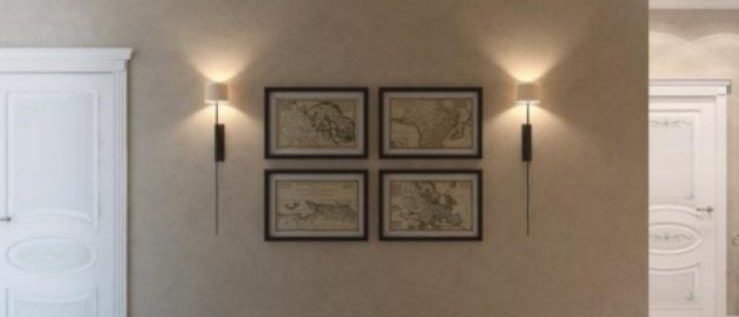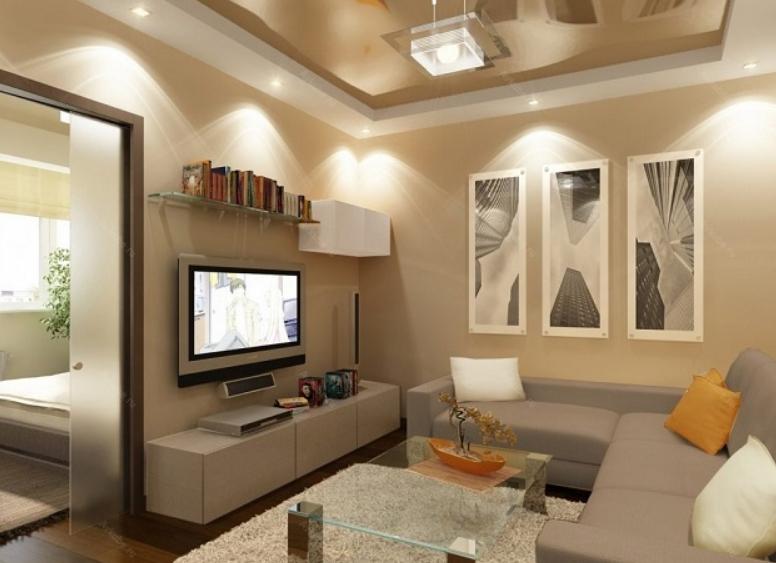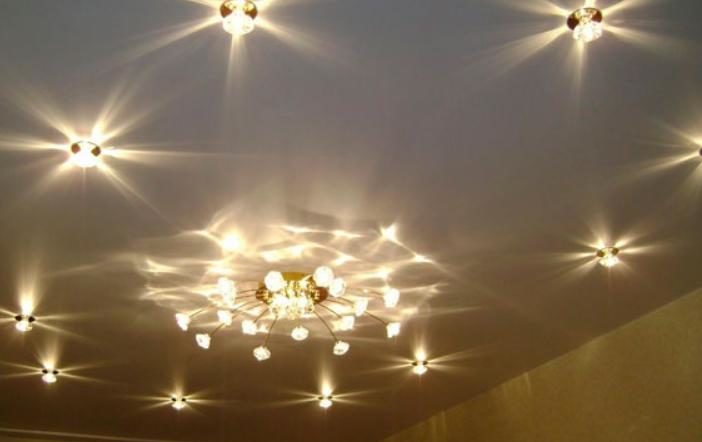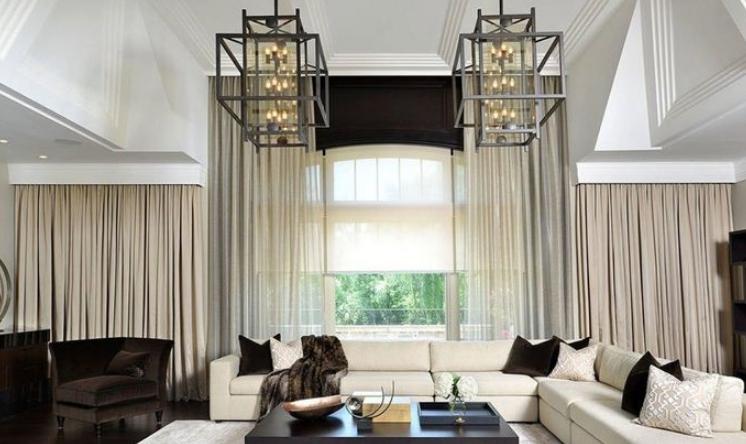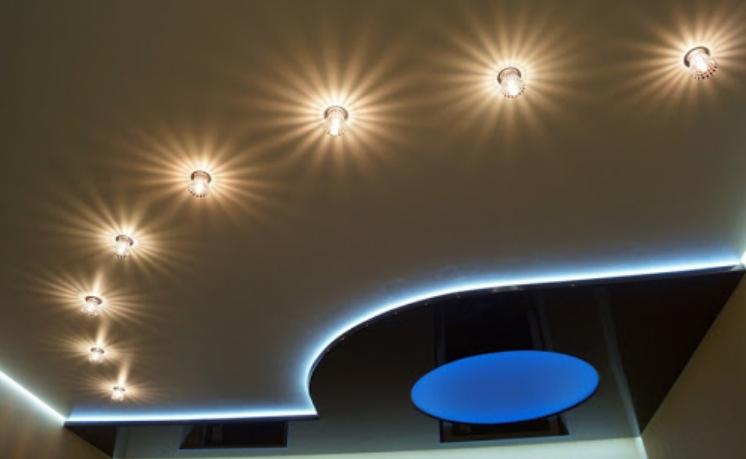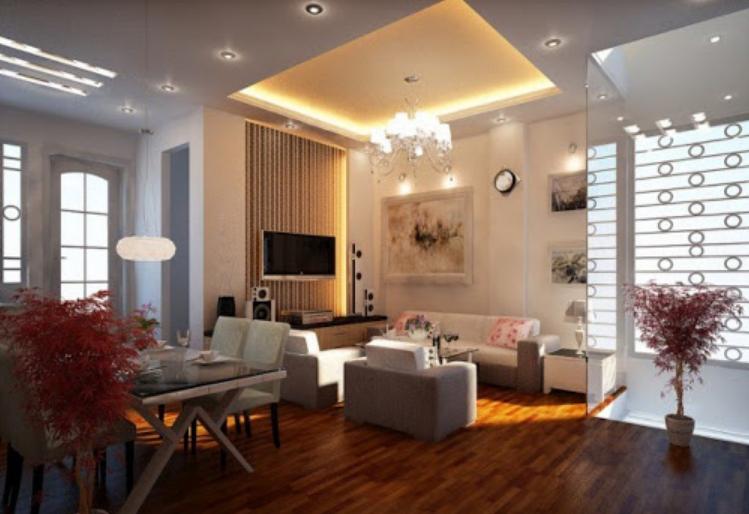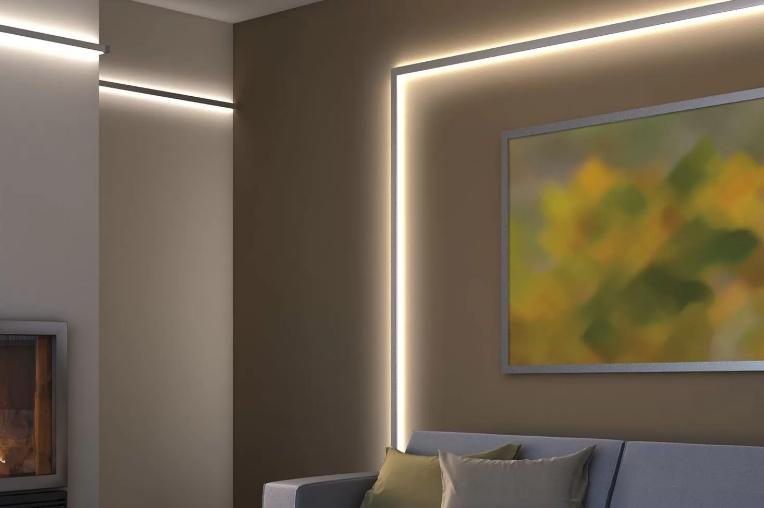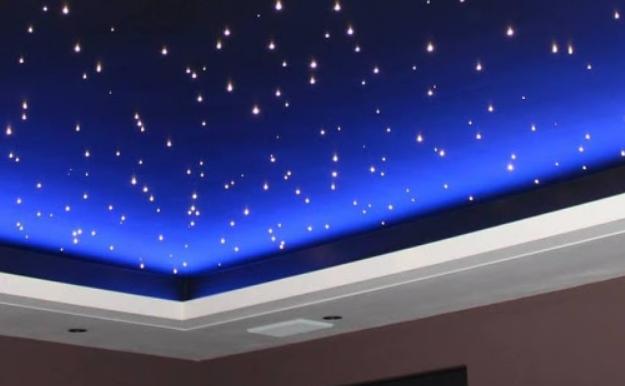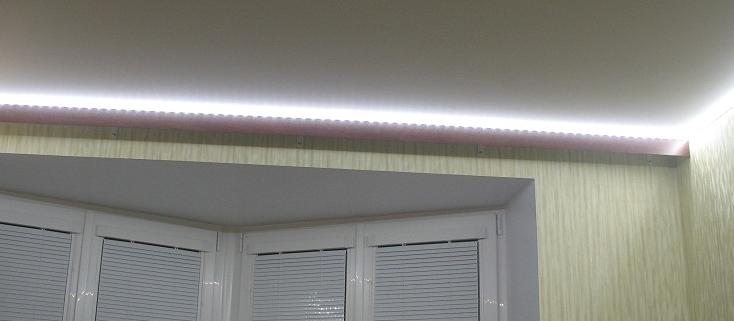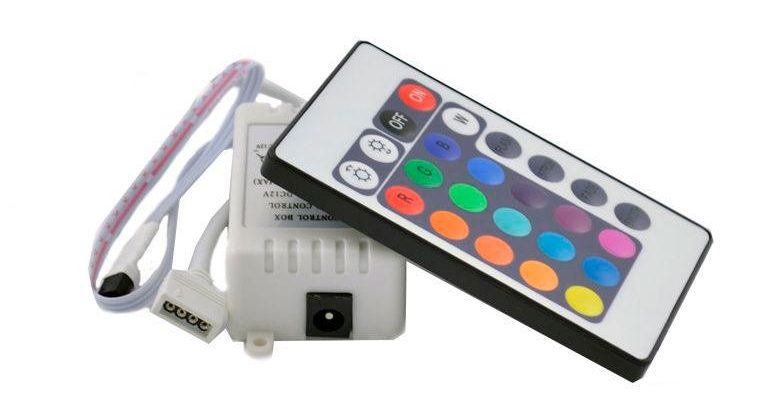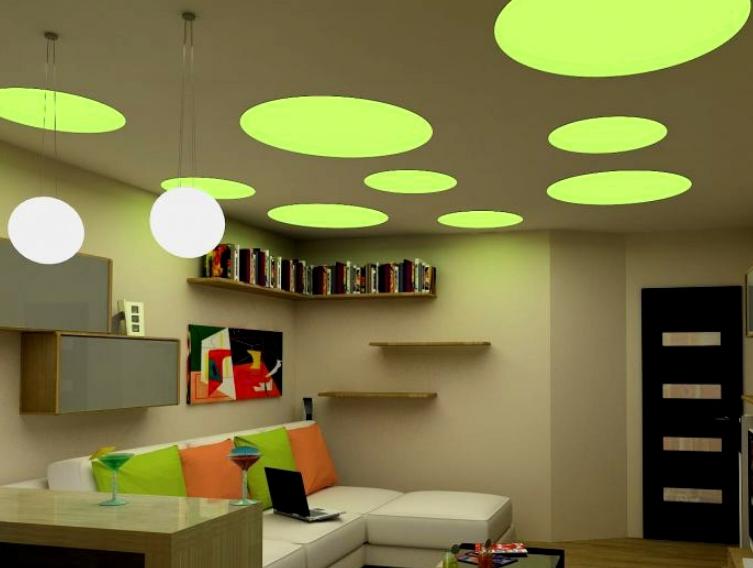Lighting design in the living room in a modern style
Light in the living room should be organized with a number of features in mind, since this room is used for recreation and receiving guests. To make high-quality and comfortable lighting, you do not need to be a designer or lighting engineer, just use a few simple recommendations.
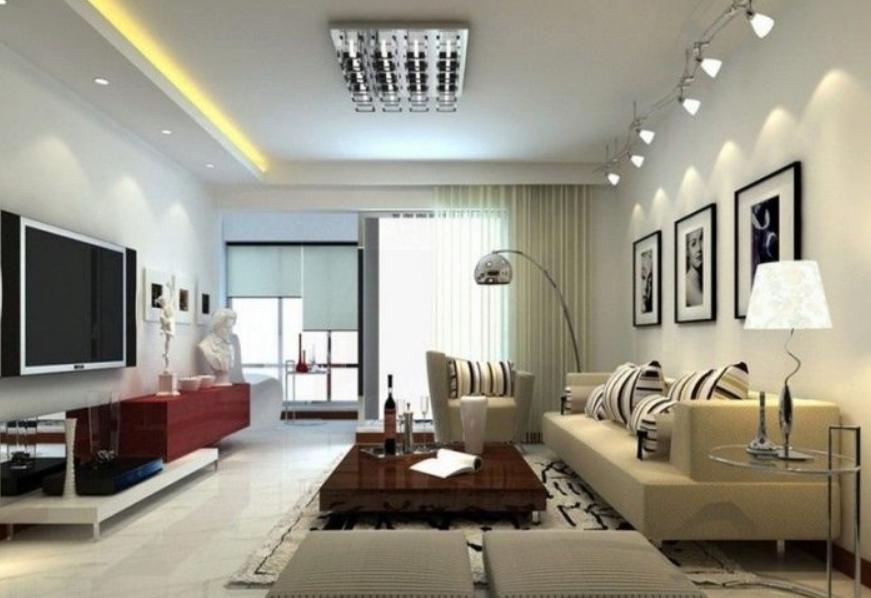
How to organize lighting in the living room
To make a quality light and ensure a comfortable stay in the living room, you need to think through some aspects:
- What options will be used in the room. The main is the general lighting, most often it is chandelier In the middle of the room or two sources of light if the living room is large. Local lighting is for a separate area and is used as needed. Directional light can be used for individual zones as well as for decoration. Decorative lighting is needed to highlight individual objects.Backlighting of paintings with wall lights.
- Make a project in which to specify the location of switches. It is important that they are in convenient locations and you do not have to get up to turn the lights on and off. You can use remote controls, dimmer switches. There are also models that are triggered when a person enters the living room.
- Take into account the height of the ceilings: the lower it is, the more compact should be the lamps. The lower edge of the chandelier should be at at least 210 cm. For low ceilings, it is better to choose chandeliers, the plafonds of which are under the ceiling. For high there are no restrictions, but it is better to use more massive models.
- If you need to illuminate different zones in the room, it is better to choose a floor lamp, which is not difficult to rearrange if necessary. Also suitable are wall sconces, which should be connected separately, the height of their location pick up in the range from 120 to 160 cm.
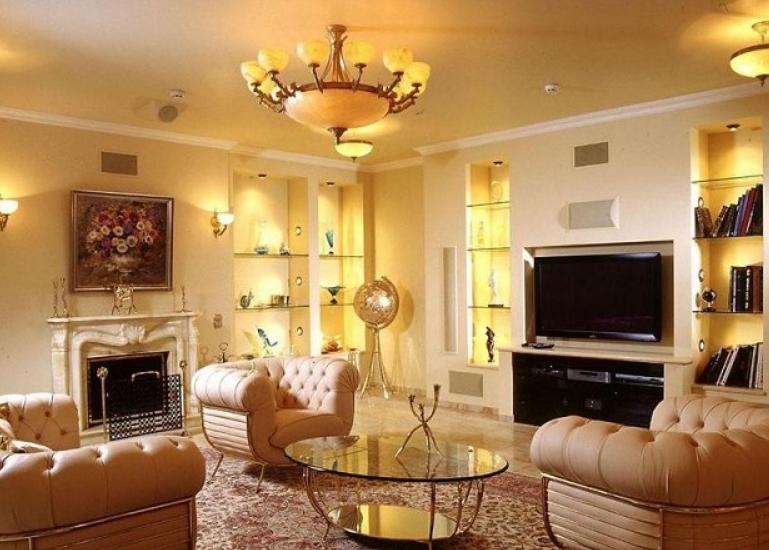
Do not choose large lighting equipment for the living room of a small area. In this case, give preference to compact models.
It is also necessary to take into account the stylistics of the room design. If the interior is saturated with bright details, then monochrome options in a minimalist version will do. But you can make a chandelier and color accent, if the situation turned out unexpressive.
Types of lighting in the living room by zone
Lighting in the hall is divided into several types, and this point should be paid attention to choose equipment. There is nothing complicated, there are simple recommendations:
- General lighting is basic in all living rooms, so planning always starts with it. Most often a chandelier is used, which can have a large number of lamps. They can be directed downward, upward, or to the sides. Its size should match the furnishings and the height of the ceilings. Do not forget about lighting standards, the equipment is selected in accordance with them.
- Additional lighting is used for specific areas. Most often this is a place to work, do crafts or the dining area, where guests are received. Local lighting near a sofa or armchair can be used to comfortably settle down with a book. This option can be located on the ceiling, walls or be movable.Decorative lighting can be placed around the entire perimeter.
- Decorative lighting in the living room is used to decorate the room and accentuate certain areas of the room or objects. For example, you can highlight statuettes, paintings, posters or original interior elements. The most commonly used lights are directional light fixtures installed in the ceiling, on the walls or even on the floor. They can be both stationary and adjustable.
You can install a system of intelligent light control, which will help to turn on only the right elements, adjusting their brightness.
General lighting options
You can organize the light in the hall in different ways - the design of the equipment may differ, as well as its type. It all depends on the characteristics of the room and preferences:
- The main chandelier in the middle, which provides lighting for the entire room. Classic solution, which is found most often and provides normal lighting in the living room. The main thing is to choose variant of a suitable style and size, which will distribute light evenly over the entire area.The combination of a chandelier and spotlights.
- Two identical chandeliers, positioned in one line. A fashionable solution that is suitable for elongated rooms where one lamp can not give the desired effect. Most often used models of medium or small size, arranged so as to provide even lighting.Two identical chandeliers is a trend of modern living room design.
- Spot lighting Can perform the function of general lighting. In this case it is necessary first of all to calculate the power of the equipment and to think about the location, usually the light sources are located every 30-50 cm. This solution is best suited for plasterboard or stretch ceiling, as the body is located in a cavity, where it is necessary to pre-wire.Spot lights in a suspended ceiling look spectacular.
You can combine a chandelier and spotlights on the sides to make the light even and get rid of dark areas in long rooms. This solution allows you to adjust the brightness very precisely.
Architectural light in the interior
As for decorative lighting, it is needed to highlight the advantages of the living room and accentuate certain areas. There can be many solutions, but more often the following are used:
- If niches are made on the walls, you can embed spot LED lights, which will illuminate the space and make it stand out from the general background. Here are great options with diffused light.
- To highlight a picture or other elements, you can use as adjustable spotlights in the ceiling, and overhead wall options. A separate variety - floor lampIf you have the opportunity to build them into this surface.
- You can illuminate furniture and other large elements to give them a floating effect. The easiest way to do this is to use an LED strip. It can also be used to highlight contours.
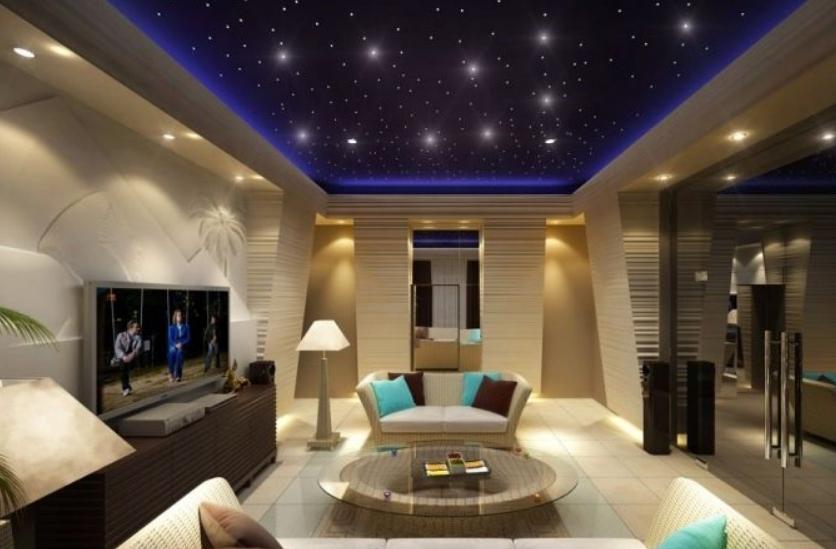
If there is an aquarium in the living room, it is worth thinking about lighting it so that it had both practical and decorative function.
Tips for modern lighting for the living room
For the best effect, use all modern achievements and keep in mind the recommendations of designers. Take into account the design of the living room, because the Scandinavian style does not need the same fixtures as for the classic or loft. As for specific tips, they are as follows:
- If you make a niche along the perimeter during the repair and lay a LED strip, it will visually raise the low ceiling. To enhance the effect, the tape can be closed with a diffuser, then the light flux will be uniform.You can illuminate not only the slopes, but also niches and structures in the room.
- When using a suspended ceiling, you can place light over it. In this case, a translucent canvas is placed through which the light passes. This solution allows you to get soft lighting over the entire surface. Or you can achieve another effect - stripes on the ceiling, or make a starry sky with Starpins.Starpins can be used to create the illusion of a starry sky.
- It is optimal to use RGB-tape, which changes shades in a huge range. With it, you can adjust the color and brightness of the backlight in a few seconds.There are RGBWW-tape they are convenient because you can clearly adjust the brightness and color temperature.
- It is worth using modern controls. These can be light or motion sensors, dimmers on the switch. But the most convenient is the remote control, which allows you to adjust the lighting from any place. And if you install a "smart home" system, you can control the lights from your phone or set the exact time on and off.A controller and remote to control the lights.
- The light over the sofa in the living room can be realized by the lights, which are attached to the back of the backrest. Then when rearranging you will not have to remove the wall elements and rearrange them.The night light is attached without spoiling the appearance.
To finish, a thematic video:
If there is no clear understanding of how to organize light in the hall, it is better to look at examples on the Internet to pick up a good idea. And then think about the location of the equipment and choose lampsusing the tips from the article.
